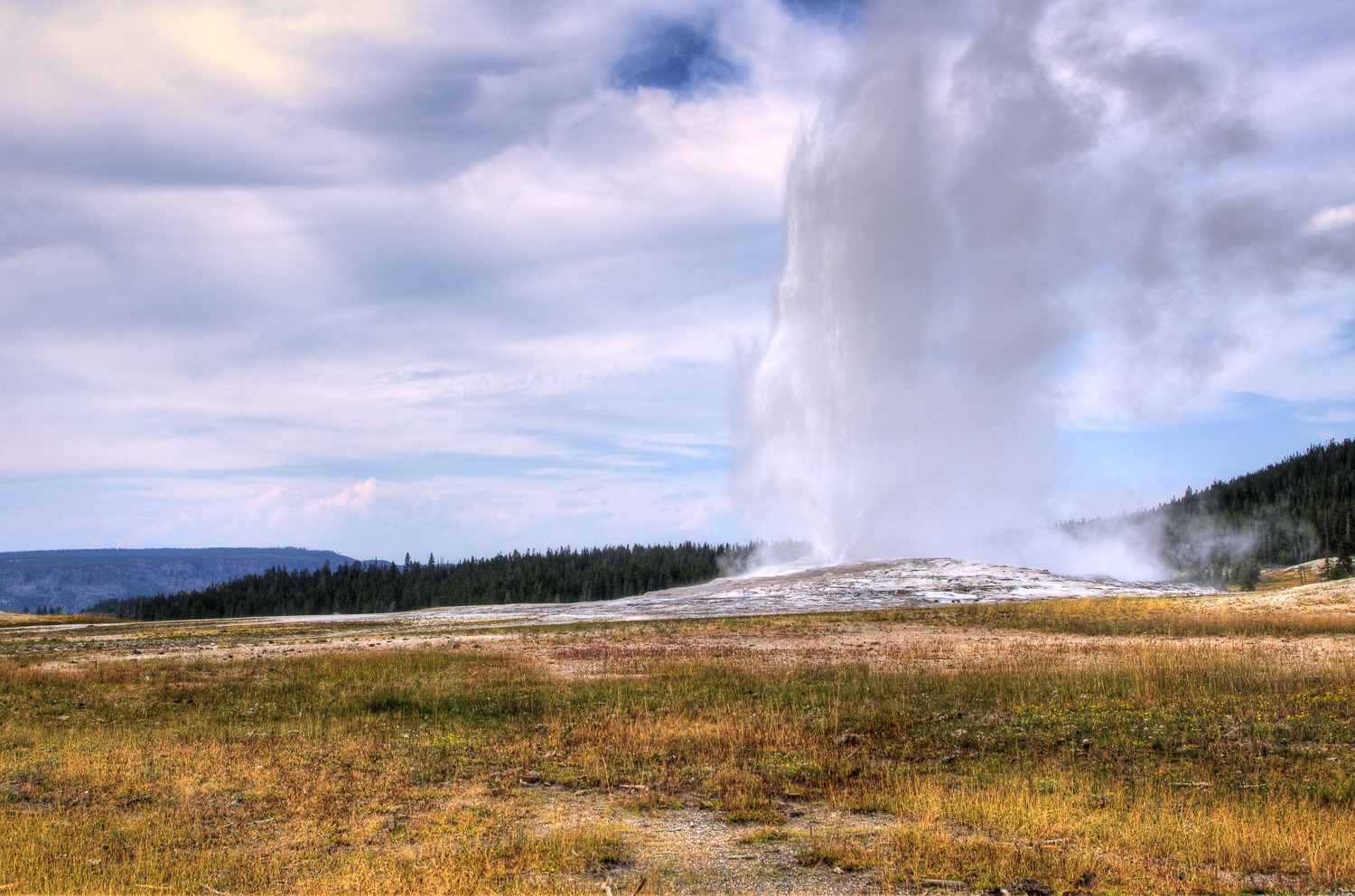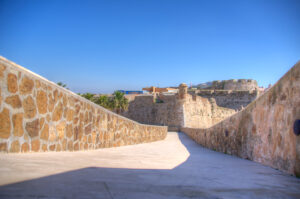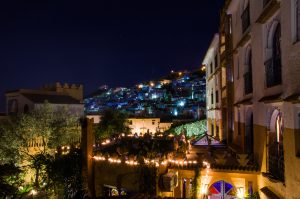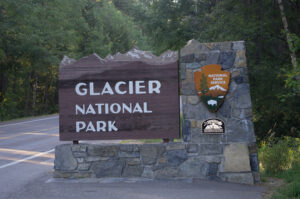Part three of Into the West is the continuation of a multi-part series that chronicles the journey that Shelley and I embarked on in late August and early September. A journey that covered over 5,000 miles over the course of about two weeks. If you missed on Part One or Part Two click here to get caught up.
Day Five
We started day five in Idaho at a lovely cabin perched on a mountainside over-looking a valley. Day five was the first full day that would be devoted to Yellowstone National Park. Little did we know that when we started out we would actually see more than we had planned. This was one of the few places on the trip that we kept moving and photographing from sunup to sundown. That’s not to say that we didn’t photograph a lot of things during the rest of the trip.
Our plan for day five was to head back into Yellowstone and visit most of the geyser basins along the west drive of the park, and drive to almost the southern entrance of the park. We entered the park at the West Yellowstone gate and made our way to Madison, where we turned to the south, heading for Firehole Canyon Drive. The drive through Firehole Canyon begins in the lower portion of the canyon and works its way up to Firehole Falls. Firehole Canyon Drive is a one-way, with traffic flowing from north to south along the Firehole River.

After stopping for Firehole Falls, and taking photographs for other tourists (a common occurrence on this trip), we proceeded along Firehole Canyon Drive until Shelley noticed an Osprey. Of course this meant another stop. I’m always in search of that great photograph of a bird of prey in the wild.
The only problem is that when the normal tourists see someone with a 500mm lens walking down the road, they all tend to stop as well. This caused too much commotion for the Osprey. I was able to clear the forming traffic jam by lowering my lens and acting as if there was nothing to see. Once the other vehicles moved off, I was able to get a few shots of my feathered friend.

After spending a moment with our friend we continued along Firehole Canyon Drive back to the main south road.
Lower Geyser Basin
Fountain Paint Pot
Once we returned to the main road we travelled south into the Lower Geyser Basin area. We stopped at the Fountain Paint Pot. This area has several geothermal features that are all a short walk from the parking lot.

Firehole Lake Drive
Firehole Lake Drive is a one-way that weaves back to Firehole Lake and then back to the Grand Loop Road. Along the way it passes several springs and geysers, including Great Fountain Geyser, White Dome Geyser, and Firehole Spring. Shelley and I actually visited the Firehole Lake Drive portion of the Lower Geyser Basin twice on this day. The first time we drove through looking at the various features and stopping briefly for photographs of White Dome Geyser. The second was at the end of the day, after we heard that Great Fountain Geyser was expected to give us a rare show. More about that later.

After completing Firehole Lake Drive we turned south onto the Grand Loop Road.
Grand Prismatic Spring
After a short drive we came to the parking lot for the Midway Geyser Basin. The Midway Geyser Basin includes Grand Prismatic Spring. This geyser, in recent history, has been known for venting steam and has beautiful colors throughout its pools. The colors are formed from the different bacteria that live in the waters of the geyser.

After walking around Grand Prismatic Spring, Shelley and I continued south along the main road toward the Upper Geyser Basin which is home to Old Faithful.
Old Faithful
What can I say about Old Faithful? Other than that it is beautiful to see and photograph. Old Faithful is simply the easiest geyser in Yellowstone National Park to predict. The predictions are based on the duration of the last eruption. While Shelley and I waited for the next eruption we stopped in the gift shop and the Visitor’s Center. The Visitor’s Center was a wealth of information about geyser predictions throughout the different geyser basins in Yellowstone. It was here that we learned that Great Fountain Geyser was going to have a rare daytime eruption on this very day. So now we had our first set time frame that we needed to be somewhere. After viewing the remaining predictions for the day we went back to the vehicle and grabbed our lunch. Below is the eruption that Old Faithful presented us with.

Once Old Faithful had finished its show, Shelley and I made our way back to the Grand Loop Road and continued south, now knowing when we needed to be back to Great Fountain Geyser along Firehole Lake Drive.
Kepler Cascades
We arrived next at Kepler Cascades. The overlook for Kepler Cascades is built out over the Firehole River. The parking area is also the beginning of the trail that leads to Lone Star Geyser, one of the few places in Yellowstone that we were not able to see on this trip.

Lewis Lake
Arriving at Lewis Lake reminded me of the lakes in central Minnesota. The only difference was, instead of pines and birch trees growing up to a few feet of the lakeside, there were pines and aspens.

Lewis Falls
We followed the road south back towards Grand Teton National Park and soon we arrived at Lewis Falls. These falls are formed from water leaving Lewis Lake. The outflow of water from Lewis Lake forms the Lewis River which flows into the Snake River, just north of the southern entrance to Yellowstone.

West Thumb Geyser Basin
On our way back to see the predicted eruption of Great Fountain Geyser, we stopped off to see the West Thumb Geyser Basin. This basin is located on the west thumb of Lake Yellowstone. The geothermal pools that are located in the West Thumb Geyser Basin were clear and calm on the day that Shelley and I visited.

After stopping at the West Thumb Geyser Basin area, we headed back to Firehole Lake Drive and Great Fountain Geyser.
Great Fountain Geyser
Shelley and I arrived at Great Fountain Geyser about an hour before sunset. Because of the number of other park visitors there for the rare event we ended up parking closer to White Dome Geyser and walking back to Great Fountain. While I was getting the camera gear out of the vehicle, the famous Yellowstone yellow bus pulled up and parked.

Great Fountain Geyser gave us a lesson about eruption prediction times. The time can be plus or minus the posted time. The bias is different for each geyser and the bias for Great Fountain Geyser is two hours. Luckily some of the other park visitors had been there prior to two hours to the predicted eruption. As we awaited the eruption, the day slowly passed into late evening, but Great Fountain started its show with just enough time left in the sky for a few photographs to be taken.





